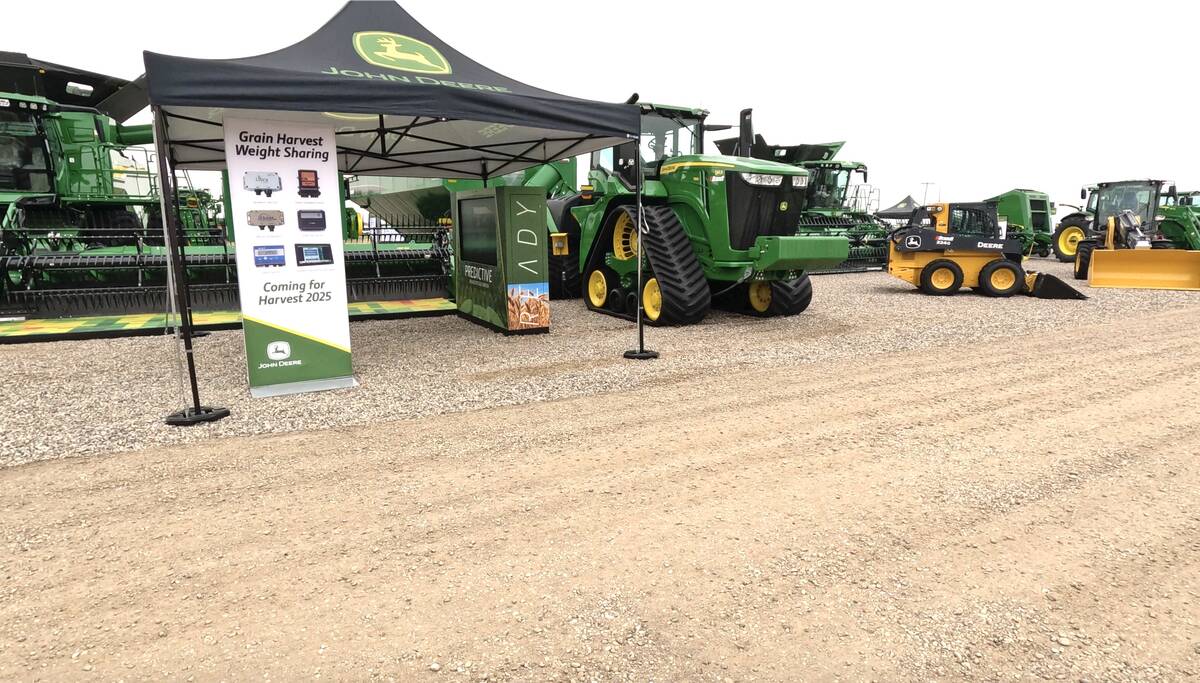How comfortable are you with your seeding plans? In the face of tariffs from the United States and now China, is it feasible to adjust seeding plans with spring fast approaching?
The most recent bombshell is the announcement by China of a 100 per cent tariff on Canadian peas along with canola oil and canola meal. Meanwhile, the status of peas going into India is a constantly changing picture.
China is turning to Russia for its peas, and India wants to support domestic production. Our federal government has done a great job of souring relations with both China and India.
Read Also

Deere expects steady production
The disruption to trade caused by the U.S. president’s passion for fluctuating tariffs will likely make new machinery more expensive.
Back in September, Canada followed the lead of former U.S. president Joe Biden’s administration and slapped a 100 per cent tariff on Chinese electric vehicles along with 25 per cent duties on steel and aluminum. China responded by launching an anti-dumping investigation into canola.
Rather than a tariff on canola seed, China has hit canola oil and meal along with peas. Is another tariff still pending on canola seed?
Meanwhile, the American tariff situation continues to take twists and turns with postponements and even some reductions on key commodities such as potash. However, it appears canola seed, oil and meal will face a 25 per cent American tariff just like most other commodities. The U.S. is by far the biggest customer for our canola oil and meal.
Canola prices plummeted immediately following the Chinese announcement with at least some companies not purchasing at all.
What will the tariff situation be once the 2025 crop is harvested? Might Canada satisfy Chinese concerns by reducing or eliminating the tariff on electric vehicles? Might American trade policy revert to something exhibiting more sanity?
Observers have opinions, but no one has answers. As farmers, we’re left watching rapidly changing price signals. The prices previously plugged into cropping budgets are no longer relevant in many cases. On canola, there has likely been very little new crop contracting.
Even locked-in prices may not be a guarantee. Here’s my personal situation.
I have contracts for new crop maple pea production on the first 12 to 15 bushels per acre. Maple peas are sold almost entirely to China, where they are typically consumed as a sprouted product. The contracts with Canadian buyers were signed long before China’s announcement of a 100 per cent tariff on peas.
So yes, I have price protection on part of my expected maple pea production, but will the buyers be able to honour those contracts? Even if the contract’s obligations are fulfilled, what are the price and movement prospects on production over and above the contracted amounts?
What looked like a profitable cropping option for a major proportion of my acreage is now clouded by tremendous uncertainty. Will the buyers want to dissolve the contracts or will they be willing to forge ahead? Seed is in place for the maple peas. A late change in seeding plans won’t be simple.
Other types of peas might more easily find replacement markets, but with China steering clear of Canadian product and market uncertainty with India, the overall market could be ugly.
With so much market chaos, a lot of producers are likely to say “damn the torpedoes” and go ahead with their established seeding plans. If you’ve paid for canola seed already, it’s difficult to not plant it.
However, some producers will be watching the news, politics and price signals and may decide to make last-minute adjustments.
Kevin Hursh is an agricultural journalist, consultant and farmer. He can be reached by e-mail at kevin@hursh.ca.
















